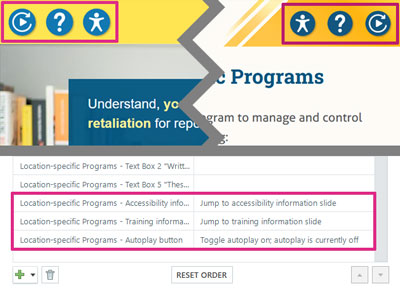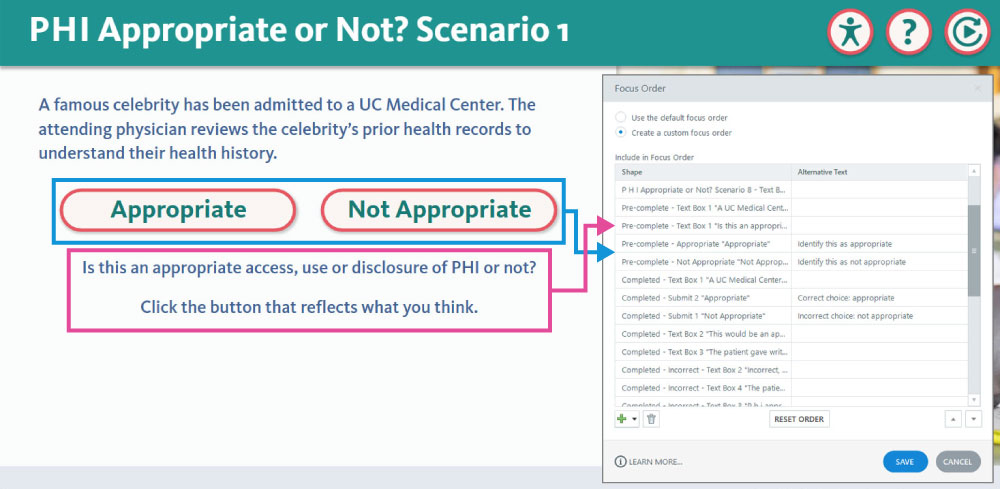Electronic Accessibility
Note on How Reading/Focus Order Should Relate to Visual Presentation
Last updated: 5/26/2025
Generally speaking, it's appropriate for the reading order encountered by assistive technologies — sometimes referred to as tab order or focus order, in certain contexts — to match the order in which content is presented visually, following standard top-to-bottom, left-to-right conventions.
But the ultimate goal is for assistive technology users to encounter content in the order that best facilitates understanding and engagement for them, and there are sometimes other factors that need to be accounted for in that regard, such as visual design considerations and secondary accessibility goals like avoiding repetitive content or unnecessary keystrokes where possible. Thus, you may find that the reading order that's best for assistive technology users differs slightly from the reading order that's perceived visually, and this is perfectly acceptable.

For example, even if a set of buttons is present in every slide, in the top-left or top-right corner of slides, it may be best to manually place them at the end of each slide's focus order. That way, assistive technology users don't have to read or tab through them at the start of every slide and can instead treat encountering them as a cue to use the jump to next slide keyboard shortcut, as the end of the slide's unique content has been reached.
Or, you may encounter situations where, for visual design reasons, it's best to place certain instructions after the interactive components to which they relate, but in the assistive technology reading order, you'd still want learners to encounter those instructions first, so they know what the interactive components do before encountering them.

